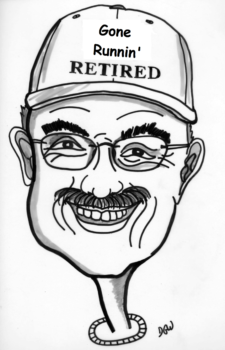I ran this marathon in February 2007. The race did not survive COVID. At this time, there is no marathon in New Orleans.
Writing these articles lets me discover what happened to a great past race. This race was one I negative split.
In 1682, French explorer La Salle claimed the Mississippi Valley, including the area near the delta, for France. By 1718, New Orleans was founded at a bend in the river that produced a natural levee. The area had been populated for 1300 years as it has an easy portage between the river and Lake Pontchartrain with access to the Gulf. The town was named after the Duke of Orleans.
Though much of New Orleans is below sea level, it was picked for its high ground and protection from hurricanes and tidal surges.
After a brief occupation by Spain, the French sold the recaptured land to the United States in 1803.
New Orleans survived many hurricanes until the flooding of Katrina hit in August 2005. When I ran the race in 2007, blue tarps covered many buildings’ roofs.
Before Katrina, the Mardi Gras Marathon used the interior of the Superdome as a race venue. We were restricted to the walkways outside of the building.
The race was held early enough in February to avoid the high hotel prices from the Carnival weeks. Some of the crewes were already holding parades the week of the race,
I don’t recall a half-marathon in 2007, and there was no congestion in the first couple of miles when we passed Jackson Square in the French Quarter. The course did not go through the narrow streets of the Quarter before heading north on Esplanade Avenue to City Park and Filmore.
Before returning to the Superdome, we never made it to the hard-hit Ninth Ward. The halfway point at the dome makes me think there was a half-marathon. I went through seconds under 2 hours.
The second half of the course went west through the Garden District to a loop around Audubon Park before returning to the finish. On the way out, I passed the Hash House Harriers aid station with the members decked out in their red dresses,
On the return trip, they were near mile 24, and the red could be spotted from a distance. New Orleans and the route west were flat. It was fast enough to run a 1:58 second half.
In 2007, there were 1084 finishers in the marathon. In 2010, Competitor Group took over the event with one of their Rock’ N Roll races. That year, 16,000 people finished either a full or half marathon. The marathon peaked with 3600 runners in 2015. Eventually, they dropped the name Mardi Gras Marathon.
By 2020, the marathon was back down to 1400 finishers; The event was canceled in 2021. Rock’ N Roll planned to return in 2022, but the event did not materialize.
With a population of 383,000, New Orleans is one of the few destination locations that does not have a marathon.
The race was on a Sunday. I flew into New Orleans on Saturday. My hotel was on the fringe of the French Quarter at Canal Street. On race morning, I picked up my race number and shirt and returned to my hotel for final preparations. It was an easy warm-up jog to the start line.
Post-race, I showered at the hotel and caught a cab to the airport, only to find DC was in the middle of a snowstorm. My flight was canceled, and the airline put me in a hotel at the airport. In my younger days, I might have skipped the hotel, put my luggage in a locker, and hung out on Bourbon Street until the morning. This trip was my fourth to New Orleans, and I had previously experienced Bourbon Street.
It’s an easy flight to New Orleans; hotels are plentiful, and the food is excellent. Hopefully, their local running club will venture to reboot the Mardi Gras Marathon.
